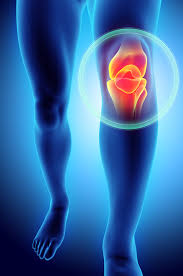 Accounts for about one third of musculoskeletal complaints in a primary care setting.
Accounts for about one third of musculoskeletal complaints in a primary care setting.
Accounts for approximately 5% of all general practice presentations.
Approximately 25% of individuals over the age of 55 years have such pain on most days in a month in the last year.
Most prevalent in physically active individuals.
The three most common causes of knee pain are: osteoarthritis (654 million individuals or 23% of adult age greater than 40 years), patellofemoral pain with a lifetime prevalence of approximately 25%, and meniscal tears (620,000,000 adults with 12% of the general adult population).
Up to 54% of athletes have some element of pain in their knees each year.
Chronic knee pain is typically due to osteoarthritis and that is associated with declines in physical function.
A history of popping, locking or giving way suggest the presence of a meniscal tear.
A popping sensation at the time of injury is suggestive of a ligamentous injury, with probable complete rupture.
Episodes of the knee giving way suggest knee instability with patellar subluxation or ligament rupture.
Recurrent knee effusions suggest meniscal injury.
Rapid onset of large effusion after trauma suggests rupture of the anterior cruciate ligament or fracture of the tibial plateau.
Injecting the knee with a local anesthetic can help differentiate the cause of the knee pain by allowing a more complete examination and to determine the integrity of ligaments.
Following an acute injury blood in the knee joint creates inflammation.
Injecting the knee with a mixture of local anesthetic and corticosteroids can decrease pain and inflammation of the knee, and viscosupplements can also treat pain and improve function in patients with osteoarthritis.
Injecting corticosteroids into the knee may relieve pain, and in animal studies steroids may impede catabolic changes in the cartilage and decrease the rate of osteophyte formation.
In knee osteoarthritis injections of corticosteroids into the knee reduces discomfort compared with placebo based on meta-analyses.
In the above studies discomfort benefits lasted as long as 2-3 weeks, however no improvement was present for functional symptoms.
Long-term effectiveness of intra-joint corticosteroid injections is lacking.
Intra-articulate corticosteroids has few side effects and infection is extremely rare occurring in 1:17,000-1: 162,000 joint and soft tissue injections.
In a randomized clinical trial of acupuncture versus no acupuncture treated with blinded laser acupuncture and sham laser acupuncture in patients older than 50 years with moderate to severe knee pain neither laser nor needle acupuncture conf2242ed benefit over sham for pain or function (Hinman RS et al ).
